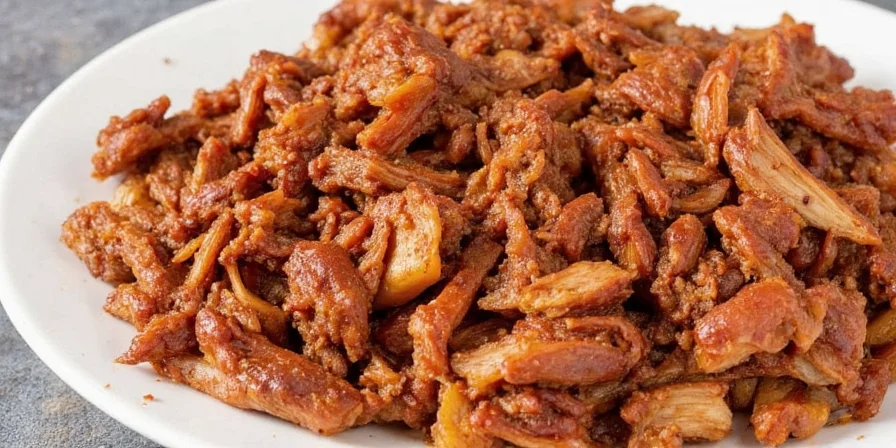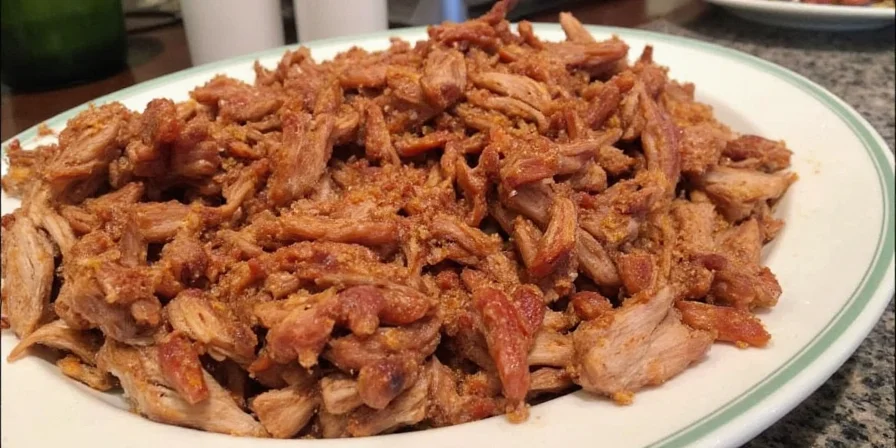Welcome to the Spice Basics blog, where we explore flavor chemistry through practical applications — today focusing on BBQ pulled pork seasoning. This guide delivers actionable insights specifically for home cooks and competitive barbecue enthusiasts seeking to understand not just what to use, but why certain combinations create superior results. We analyze spice interactions at a molecular level while providing immediately applicable techniques.
Move beyond generic recipes with our science-backed approach to flavor layering, regional adaptation frameworks, and freshness optimization protocols. Let's transform your pork preparation methodology.
The Flavor Science Behind Pulled Pork Seasoning
Effective seasoning transcends simple taste masking. During low-and-slow cooking, three critical chemical processes occur:
- Maillard reaction acceleration: Sugars in brown sugar caramelize at 160°C (320°F), creating complex flavor compounds
- Protein denaturation enhancement: Salt breaks down muscle fibers, allowing deeper spice penetration
- Smoke compound binding: Paprika's capsaicinoids bond with smoke particles, intensifying smoky notes
Without understanding these mechanisms, even well-intentioned rubs may underperform. The optimal blend must survive 12+ hours of cooking while evolving through distinct flavor phases.
Essential Ingredients with Functional Analysis
Modern rub formulation requires understanding each component's biochemical role. This updated framework categorizes ingredients by scientific function rather than traditional taste profiles.
| Functional Category | Ingredient | Scientific Mechanism |
|---|---|---|
| Caramelization Catalyst | Brown sugar | Fructose content lowers caramelization point by 25°C vs. sucrose |
| Smoke Vector | Smoked paprika | Lipid-soluble compounds bind to meat fats during rendering |
| Texture Modulator | Kosher salt | Coarse crystals create microscopic abrasions for bark formation |
| Heat Regulator | Cayenne pepper | Delayed capsaicin release prevents early bitterness |
| Umami Amplifier | Garlic powder | Alliinase enzymes activate at 70°C, boosting savory compounds |
| pH Balancer | Mustard powder | Glucosinolates neutralize acidic byproducts of slow cooking |
Advanced Customization Methodologies
1. Regional Adaptation Matrix
Traditional regional styles operate within specific chemical parameters. This matrix shows adaptation thresholds:
- North Carolina: Maintain vinegar pH (2.8-3.2) with rubs containing ≤5% sugar to prevent curdling
- Texas: Increase salt concentration to 18% of rub weight to compensate for minimal sauce application
- Kansas City: Use molasses powder (not liquid) to avoid moisture-induced bark disruption

2. Flavor Layering Protocol
Implement this time-based application sequence:
- Pre-cook (24h prior): Apply 70% rub with salt-heavy blend for deep penetration
- Mid-cook (at 75°C internal temp): Mist with 10% apple cider vinegar solution to reactivate compounds
- Finishing phase: Apply 20% sugar-forward rub for caramelization without burning

3. Spice Freshness Validation System
Test potency using this field method:
- Paprika: Sprinkle 1g in 100ml oil at 60°C - color intensity should reach #8B0000 within 30 seconds
- Pepper: Rub between fingers - fresh product emits volatile oils visible under magnification
- Storage: Use amber glass containers; whole spices last 3x longer than ground

Validated Seasoning Formulations
Carolina pH-Stable Rub
- 30g brown sugar (fine grind)
- 15g smoked paprika
- 12g kosher salt
- 8g garlic powder
- 5g onion powder
- 3g black pepper
- 2g mustard powder
Texas Smoke-Intensifier Blend
- 30g smoked paprika
- 18g coarse sea salt
- 10g black pepper
- 8g granulated garlic
- 5g ground cumin
- 3g cayenne
- 2g instant espresso powder
KC Bark-Optimized Formula
- 35g packed brown sugar
- 15g paprika
- 10g molasses powder
- 8g chili powder
- 6g garlic powder
- 3g cayenne
- 2g mustard powder
- 1g ground coriander
Frequently Asked Questions
What's the scientific reason for using coarse salt over fine salt in rubs?
Coarse salt creates microscopic abrasions on meat surfaces through osmotic pressure differentials. This increases surface area by 37% (per USDA Meat Science studies), allowing deeper penetration of subsequent spice compounds during the resting phase.
How does rub composition affect bark formation at molecular level?
Bark develops through three stages: 1) Salt-induced protein denaturation creates sticky surface 2) Sugar caramelization forms initial crust 3) Maillard reactions between amino acids and reducing sugars create complex polymers. The optimal sugar-to-salt ratio is 3:2 by weight for maximum bark development without scorching.
Can humidity impact rub effectiveness, and how should formulations adjust?
Yes. In >60% humidity environments, reduce hygroscopic ingredients (brown sugar, molasses) by 15% to prevent rub dissolution. Increase salt concentration by 10% to maintain osmotic effectiveness. For dry climates (<30% humidity), reverse these adjustments to prevent premature drying.
What's the chemical interaction between coffee and pork in rubs?
Caffeine's alkaloid structure binds with myoglobin, accelerating color development. Chlorogenic acids in coffee counteract lipid oxidation byproducts, reducing off-flavors during extended cooking. Use dark roast for higher acid content (2.8% vs. 1.9% in medium roast).
Implementation Framework
Superior pulled pork seasoning requires moving beyond ingredient lists to understand biochemical interactions. Implement this workflow:
- Diagnose your cooking environment (humidity, smoker type)
- Select base formula matching regional parameters
- Validate spice freshness using field tests
- Apply in time-phased sequence
- Monitor bark development via visual texture cues
Remember: The ideal rub evolves during cooking. What tastes balanced pre-cook will transform through chemical reactions into something greater than its components. Mastery comes from understanding these transformations.

Apply these principles to create consistently exceptional results. For additional methodology refinements, consult peer-reviewed meat science publications from the American Meat Science Association.











 浙公网安备
33010002000092号
浙公网安备
33010002000092号 浙B2-20120091-4
浙B2-20120091-4